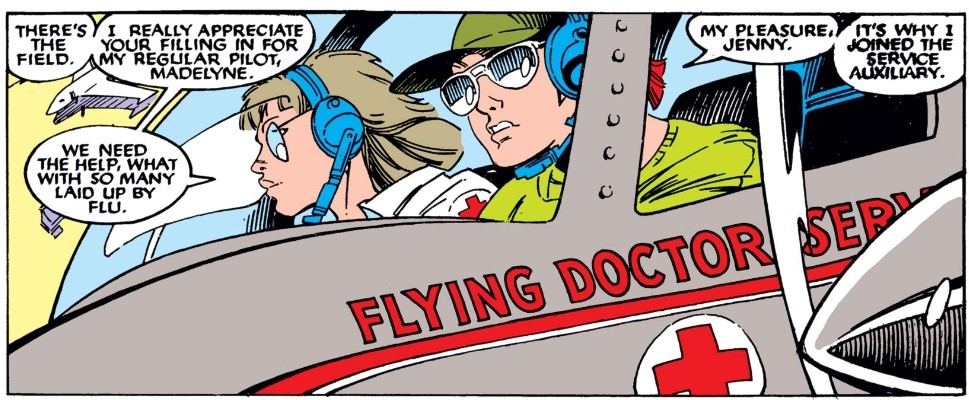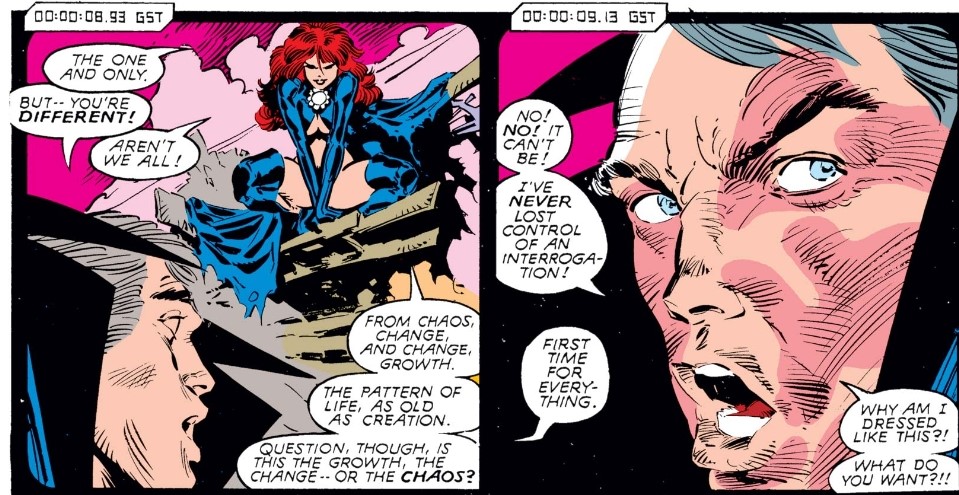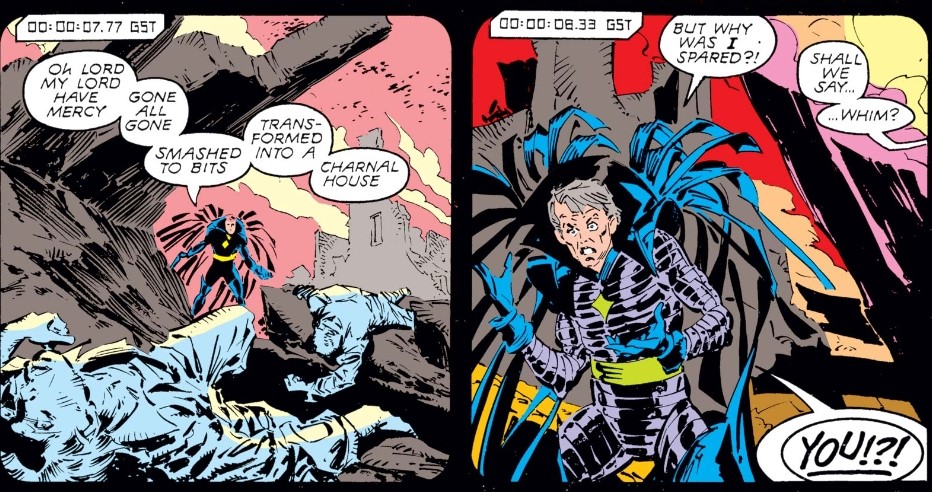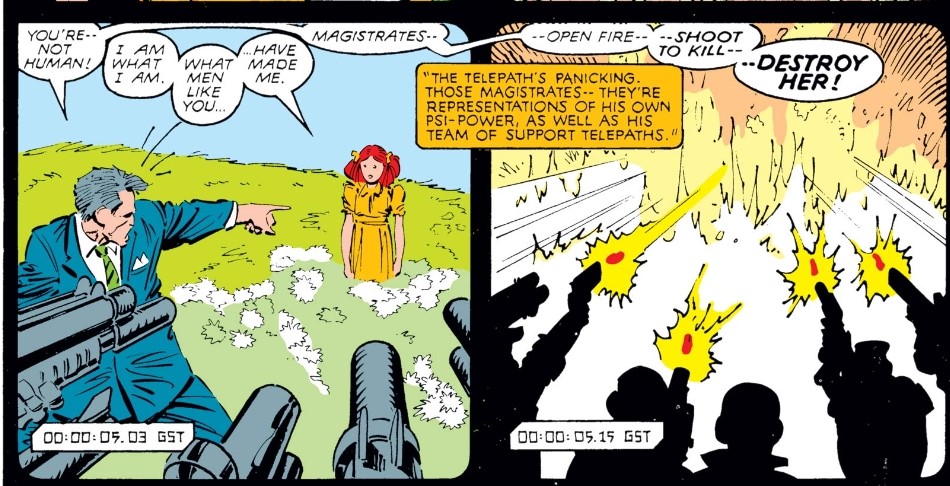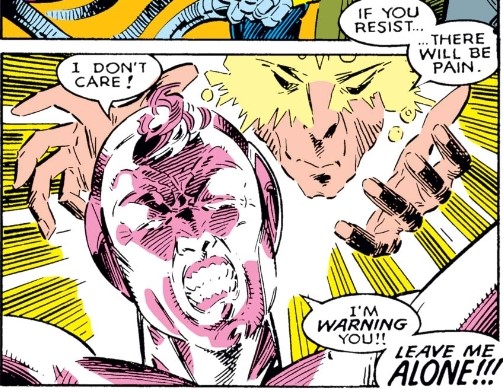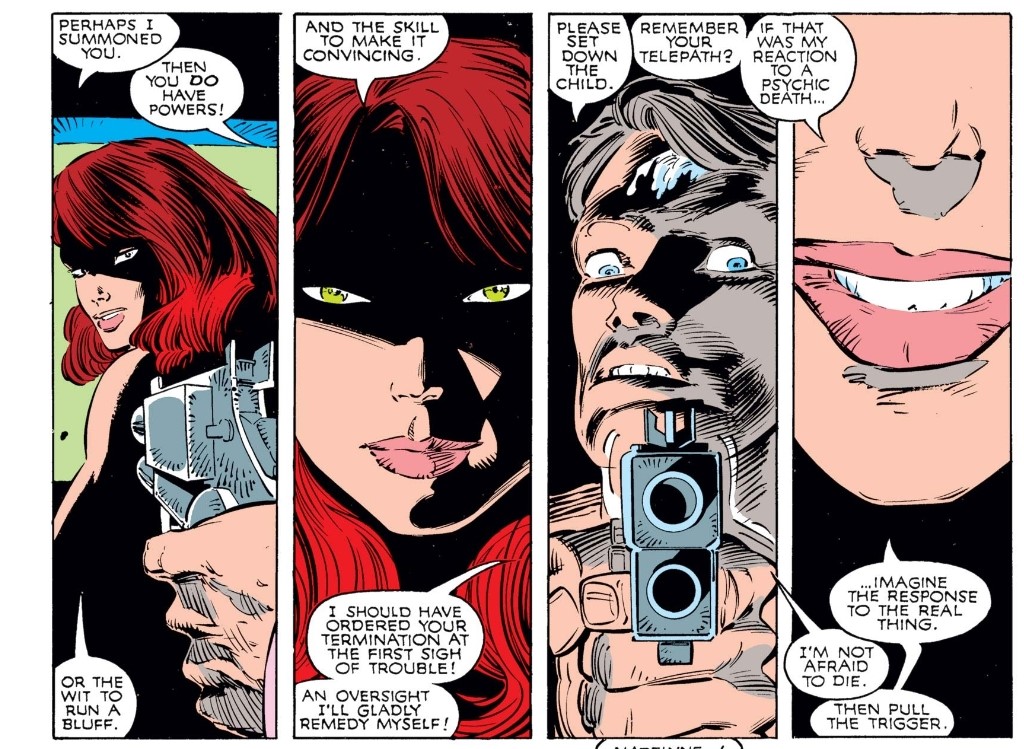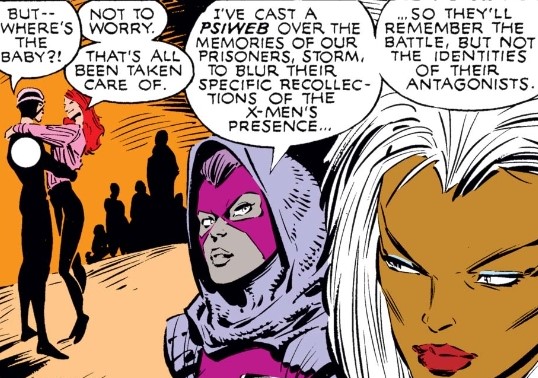By the end of the second brood saga, the die is cast, so to speak on Madelyne’s transformation into the Goblin Queen, but instead of launching straight into Inferno, Claremont gives us one more story arc that challenges the reader to hold sympathy for Inferno’s devil. #xmen 1/12
There’s a very old literary strategy at play here called “delay of anticipation,” which just means forestalling an inevitable conflict in order to add tension to the forthcoming battle. You can see it used extensively in Grecco-Roman epics like The Iliad and The Aeneid. 2/12
The Genoshan Saga stands on its own as a powerful and compelling story (Jason Powell calls it Claremont’s best), but the B-story is the Goblin amongst them, and watching Madelyne embody both good and evil adds a lot of nuance to her Inferno character. 3/12
Despite having already made her devil’s bargain, Claremont torments us somewhat by reminding us of Madelyne’s empathy and humanity, first in comforting Jenny Ransome, and second in her righteous anger toward an oppressive regime. 4/12
Claremont even has her function as the moral compass of the arc, allowing Madelyne to deliver the moral of the story to the Genegineer. That duality is fascinating – a damned character committed to betrayal and destruction, who is still the voice of righteousness here. 5/12
She’s still sympathetic, noble, and heroic, but now, when wronged, she turns to a degree previously unconsidered, slaughtering the team of scientists trying to violate her and psychologically torturing the male authority figure she knows to be responsible for all of it. 6/12
Claremont connects this latter aspect directly to Scott’s abandonment, with Madelyne telling the Genegineer “I am what I am. What men like you have made me.” She then leaves him broken in Sinister’s costume, foreshadowing the truth we don’t yet know: Sinister made her. 7/12
And this is the Maddy Claremont reveals: a woman whose life has been utterly controlled by the whims of powerful, callous men, a pattern that leaves her in a position of desperation where she is ready to take power for herself. 8/12
And this is what we see her do in a stunning scene in which she wanders into the nursery and is found naked by the Genegineer, cradling an infant; thus reflecting her longing for innocence, naturalness, and that feeling of maternal bonding that was ripped from her. 9/12
In the Genegineer, she finds a worthy target, a man with similar characteristics to the men she hates (Sinister and Cyclops) and she allows herself to delight in torturing him, reflecting on the glory she is bound for until Havok arrives and she wears the mask again. 10/12
In the closing of the issue, we get another bit of truly dark and ominous foreboding. In the background of a panel, Havok asks “where’s the baby?!” and she replies “Not to worry. That’s all been taken care of.” 11/12
This decision to delay Madelyne’s reveal as the Goblin Queen, in addition to building anticipation, builds poignancy by allowing us one more chance to admire the character -damned though she is- thus again adding a sense of righteousness/sympathy to the villain she becomes. 12/12
Sorry for the super-long thread (longest we& #39;ve ever done, I believe). I just really like this character. Conversely, if you think it& #39;s not long enough, I humbly suggest you check out the video essay we made on Maddy: https://youtu.be/fc3XBfV_pkc ">https://youtu.be/fc3XBfV_p...

 Read on Twitter
Read on Twitter
